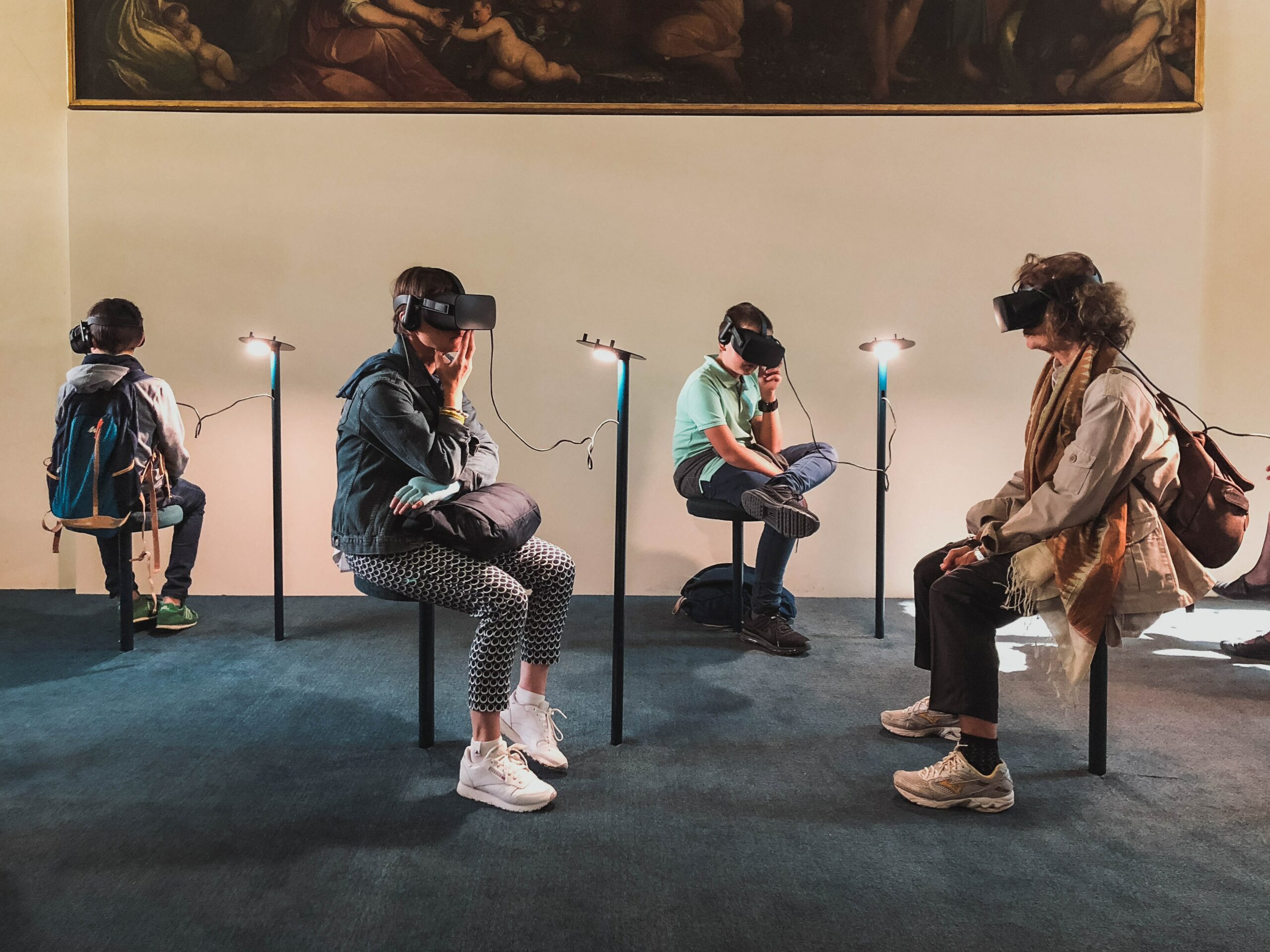The augmented reality market is primarily driven by the growing use of smartphones and tablets for computing purposes. The increasing use of smartphones and tablets for computing purposes has led to an increase in the demand for AR glasses and devices, driving growth in the global augmented reality market.
According to an augmented reality market share research report, the worldwide market for augmented reality is projected to grow from USD 6.12 billion in 2021 to 97.76 billion by 2028, a 48% compound annual growth rate (CAGR) over the 2021-2028 period, according to an analysis of related commercial data and markets globally and newly published research studies.
But what exactly is Augmented Reality? And how are people using it?
Augmented reality is a live direct or indirect perspective of a concrete, physical world environment whose elements are broadened (or augmented) by computer-generated sensory input such as video, graphics, sound, or GPS data. Augmented reality amplifies one’s present conception of reality.
A straightforward way to comprehend the concept is through Google Glass. When someone sees something through Google Glass, they see that image through the lens of their own eyes with bits of computer-generated information layered on top.
Let’s dive into the Augmented Reality market statistics and explore where this trend might be heading next.
Key Augmented Reality Statistics And Facts 2022
- AR engagement has been increasing by almost 20% since the beginning of 2020, with AR-engaged users seeing conversion rates 90% higher than those who don’t engage with AR.
- 2% of consumers use augmented reality, and 73% of mobile AR users are either highly satisfied or very satisfied with experiences that combine virtual content with their physical environment.
- In 2022, 65.9 million AR and VR headset units will be sold.
- Audi, Mercedes-Benz, Tesla, Toyota, and Volvo will soon introduce AR capabilities in their vehicles.
- The healthcare industry’s augmented reality and virtual reality market will be worth $7.05 Billion by 2026.
- By 2022, mobile AR ad revenue is predicted to be at the very least $2 billion.
- In 2019, the number of people who have mobile augmented reality apps surpassed 9 billion and is projected to surpass 35 billion by 2022.
- A recent survey conducted by Deloitte revealed that 88% of mid-sized businesses are employing augmented reality.
- As of May 2018, there are 2,825 AR startups listed on Angel’s website.
- Microsoft possesses more than 10,000 patents in virtual reality and augmented reality. (Statista)
Augmented Reality Statistics 2022
The following revealing statistics and facts about augmented reality, will provide you with a better understanding of where the market is going.
1. AR Games and Content
From 2017 to 2022, Augmented Reality (AR) games grew at an impressive rate of 152.7% annually. This means that AR games will be worth $3 billion by 2023 instead of the original forecasted value of $865 million by 2023 due to explosive innovation in recent years.
2. AR for Shopping
With Augmented Reality, you will be surprised by how convenient and exciting shopping becomes. According to a recent survey 32% of consumers opted for AR when shopping, and 73% were very satisfied with it.
Constructing an AR shopping experience could help improve customer interaction for those in eCommerce. This way, you could lift the limitations of time or place, which is a great way to get more sales. Why not create your own augmented reality shopping experience?
3. AR Headset Market
Many analysts predict a radical increase in the sales of AR and VR headset over the next few years. These headsets are predicted to sell more than 26 million units a year by 2023. (Statista)
4. In-Car AR
Augmented reality will become an indispensable part in cars just like it has for mobile experiences. In 2019 in-car AR was one of the largest trends, and Nvidia’s DriveAR platform was the highlight.
They pointed out everything on the car by using a dashboard-mounted display overlaying graphics on camera footage from around the car. Following their example, Audi and Mercedes-Benz signed up for work with that technology. In contrast, all automotive giants, including Tesla, Toyota, and Volvo, have adopted this trend already.
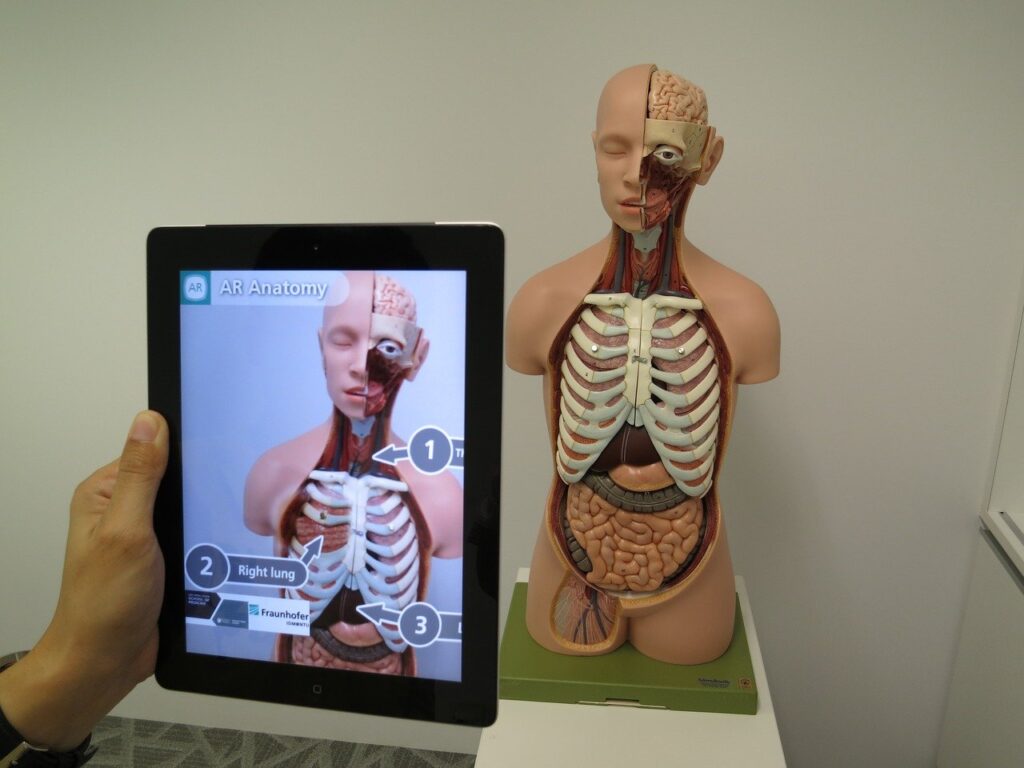
5. Healthcare AR
A study by Mindshare revealed that the region of our brain dedicated to encoding memory produces three times more activity from AR content than it does traditional media. Now that there is empirical evidence to endorse the fact that AR is more stimulating and engaging than traditional media, what do you think?
6. Digital Marketing & AR
67% of executives in advertising agencies say they are excited to use AR more. Numerous agencies have already created digital campaigns with this technology to serve their clients.
One of the benefits of using augmented reality for promotion, is that it’s easier to get your brand in front of the customer without distraction.
7. AR Users – Consumer Behaviour
Imagine, if you will, the fact that one-seventh of the world’s population is using AR. Take a second to think about how many people are on your contact list and friend’s lists who use Facebook, Snapchat, or Instagram. These people all count as users of AR without even realizing it.
8. Companies Invested in AR
Every year we see new startups in different niches that don’t exist on the market yet. At this moment, 2,825 companies are noted in the AR category on Angel List.
Augmented Reality Market Size 2022 & Growth Predictions
Augmented reality (AR) has been around for a while, but it’s just now starting to make an impact in the world.
One of the best ways to explore the potential of this technology is to take a look at the market size and growth predictions for 2022. As more people become aware of this technology, we can expect these numbers to continue to rise over time.
- Markets expect the AR market to be valued at $61.39 billion by 2023, with augmented reality outperforming other sectors. And we’re likely to see substantial numbers going forward. By the year 2023, it is estimated that we will see an Augmented Reality market of $61.4 billion.
- By 2022, augmented reality users are expected to exceed 3.5 billion. As such, approximately 44% of mankind will be utilizing AR within the a matter of years.
- Forrester’s projections show that by 2025, there will be 14 million American employees using smart glasses daily in their workplaces. This growth is primarily fueled by the industry 4.0 apps incorporating augmented reality (AR).
- The global AR/VR market can reach $94.4 billion by 2023. The eCommerce sector is expected to have a high demand for AR and VR, with a growth rate of nearly 7%.
- Augmented reality has a better future on mobile than virtual reality. Augmented Reality (AR) is not all that dissimilar from Virtual Reality (VR). But they provide different user experiences. Both technologies allow users to experience the online gaming and entertainment environment in new and transformative ways.
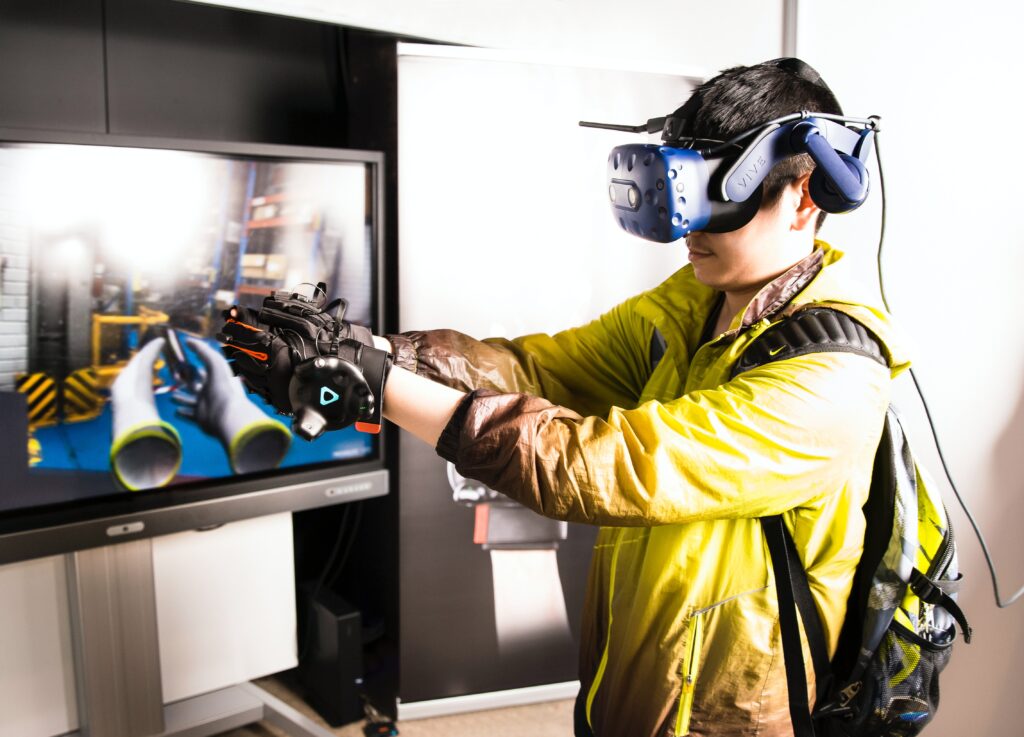
AR surpassed VR because it can be used anywhere with no cumbersome setup or expensive hardware. This can be attributed to Google’s AR software development kit and Apple’s decision to invest in this ever-evolving technology. Currently Virtual Reality experiences are more suited for use on gaming consoles and PC and aren’t ideal for mobile use. However, augmented reality provides an immersive experience for users on mobile.
Augmented Reality (AR) Market Overview
The objective of augmented reality is to provide meaningful and relevant information interactively. It gives an additional ability to see how things look before they are built to improve productivity and utilization of resources.
In addition, it helps companies develop new products more easily by adding digital content and images directly into their design process without going back and forth between engineers, clients, investors, etc.
This technology has been around for a while now but has not seen widespread adoption. It requires a lot of processing power and bandwidth, which can be expensive for both consumers and developers.
The success of Pokemon GO brought AR into the limelight because it was able to keep a stable frame rate while using AR. At the same time, most other similar apps or games either have poor frame rates or don’t work at all when there’s low connectivity.
However, many people still suffer from motion sickness. This is because the user’s depth perception gets confused by focusing on both real-life visuals and virtual objects in front of them.
Augmented Reality Market Share
Augmented reality can provide new and exciting ways for retailers like you. Its possibilities are endless. Even when combined with wireless technology, which could enable mobile integration. And integrated with appliances in the home to offer greater connectivity for users.
Expect massive growth in biotechnology and healthcare industries during the forecast period due to their use of augmented reality (AR).
Augmented Reality Market Share – By Type
The AR hardware and software market is expected to be led by wireless devices, followed by head-mounted displays and other types of hardware.
The growth in this segment can be attributed to the rising demand for more enhanced and realistic experiences through augmented reality on mobile phones. Head-mounted displays are expected to grow owing to their ability to provide high-quality images with a large field of view.
Software
Software and hardware are two of the most essential segments in the augmented reality market. The software segment was valued at USD 36.88 million in 2020. The CAGR is anticipated to be in the region of 142.06% over the forecasted period (2021 – 2026).
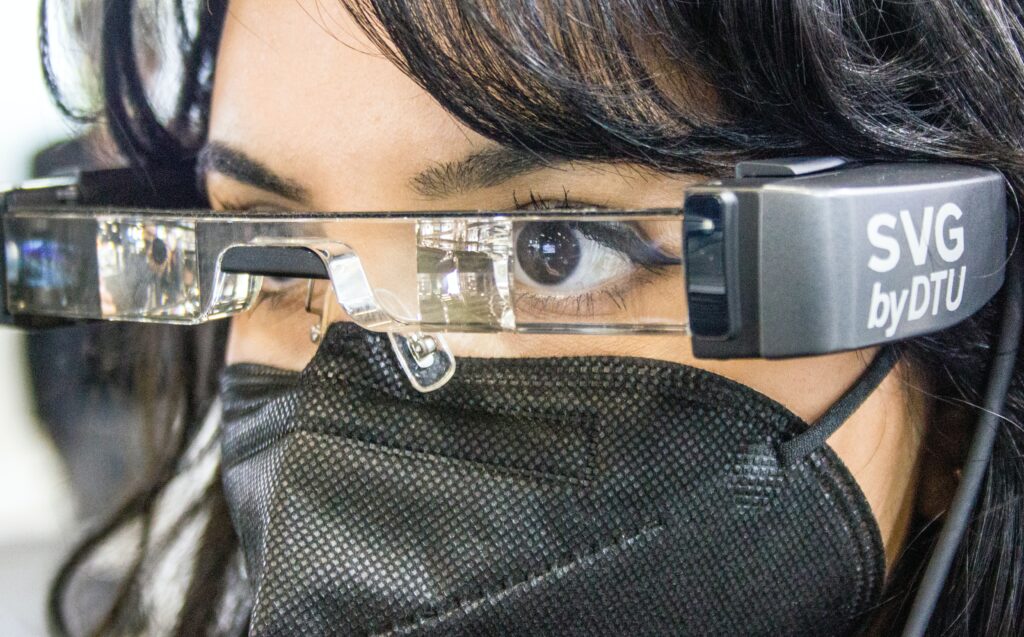
Hardware
The hardware segment was valued at USD 1.61 billion in 2020. And in terms of CAGR, the projections is estimated to be 153.15% from 2021 to 2026. The hardware market is growing because of the increased adoption rate by gamers and other end-users who want to experience life as they never have before with the help of smartphones or headsets.
Augmented Reality Market Share – By End-user Vertical
The report segments the augmented reality market based on end-user vertical. The most significant end-user verticals accounted for in this report are travel and tourism, healthcare, gaming, education, retail/marketing, automotive, military, and defense.
Travel and Tourism
This segment is expected to dominate the global AR market over the projected period. The growth in travel and tourism can be attributed to several factors, such as increasing outbound travelers, increased online bookings, and the increasing number of tourist attractions.
Healthcare
Healthcare is anticipated to show an impressive growth rate over the forecast period due to the emergence of new AR technologies with improved capabilities such as 3D rendering, cloud computing, voice control, etc., enabling the digitization of medical information leading to enhanced accessibility.
Also, rising demand for healthcare solutions within developing economies is anticipated to drive this segment’s growth during the forecast period.
Education and Training
Education and training are two of the most important ways to prepare for emerging technology. With augmented reality, there is software that can take a user through a tutorial on using the product or service.
This will allow them to learn about the product before using it. Users will have the opportunity to learn what they need without any confusion, which will increase their satisfaction with the product or service.
Augmented reality has the potential to improve medical training and education as well. Virtual and augmented reality can be used in such a way as to allow a doctor or a surgeon to practice making incisions, performing an operation, and even stitching up wounds before going into surgery.
This helps the doctor or surgeon develop better skills before operating on a real person. By using virtual and augmented reality for training purposes, doctors may make fewer mistakes that would have been avoided had they been practicing more beforehand.
Mechanical equipment
This segment has been identified as one of the emerging subsegments within the augmented reality market. The burgeoning AR technology development within this end-user vertical is expected to positively affect its growth prospects over the forecast period.
Gaming
The gaming industry is one of the key drivers of the AR market. Augmented reality has become an essential component in gaming, enabling users to virtually intermix with a platform and experience more interactive and immersive games.
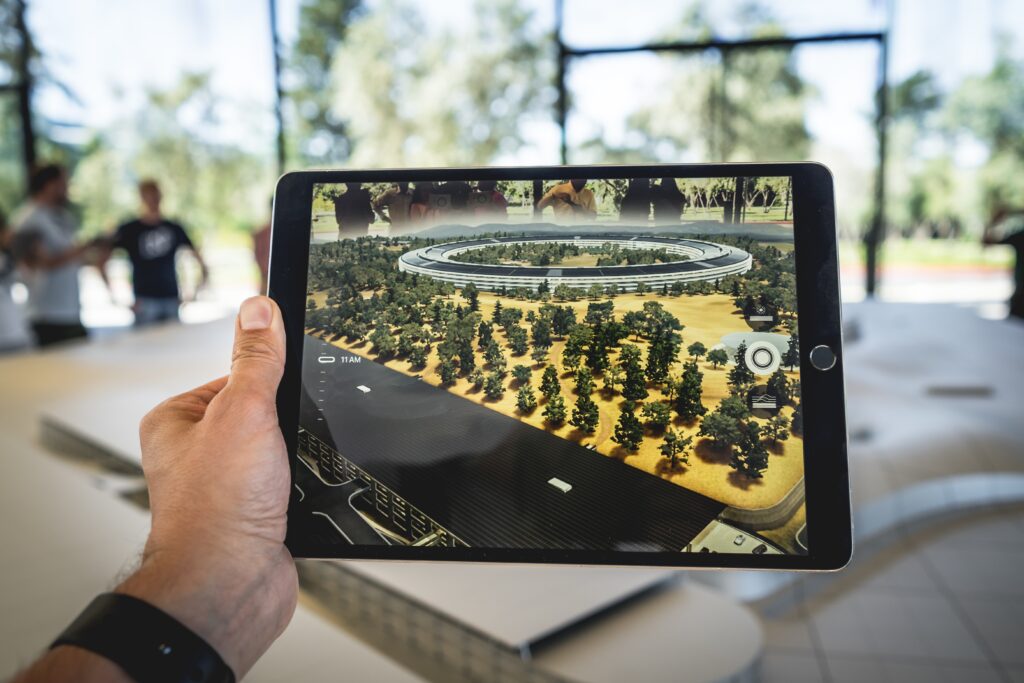
The demand for Augmented Reality is also expected to increase in the education and training sector. This is due to its great potential to provide virtual simulations of events, experiences, and scenarios that are difficult to recreate in real life. This can be done by projecting visuals such as 3D content into the real world.
Retail and Marketing
Augmented reality can change the retail and marketing industry by providing a new way to engage customers.
For example, in the marketing field, retailers will provide a more interactive experience with their products to customers and increase their engagement. Consumers are not as inclined to purchase a device they don’t want if they can’t try it on or have some sort of interaction with it.
The use of augmented reality would allow for this type of interaction. Imagine going into a clothing store. You could put your phone up to an outfit in the store and see how you look in it without actually trying it on. This is just one example of how retailers could use augmented reality to get people more involved with their products.
In terms of retail, augmented reality creates new ways to shop online. One day we may be able to browse through an entire store without even stepping foot inside.
Internet users will virtually walk around stores by viewing 3D models or images of products before they buy them and make their purchase decisions based on what they see on the screen. For example, this technology could help customers see exactly how furniture would look in their home before buying it. And they could make sure that it matches existing pieces in their space.
Automotive
Some of the critical applications of augmented reality in the automotive industry are improved navigation, enhanced customer service, and vehicle maintenance. Some of the major players in the automotive industry are developing solutions to integrate augmented reality into their products and services.
Military and Defense
The military and defense sector is a fast-growing segment of the augmented reality market. Augmented reality can be used in diverse applications for military and defense, such as training, simulation, and maintenance.
Top aerospace companies are investing heavily in virtual reality (VR) and augmented reality (AR) to enhance their products. These include the likes of Lockheed Martin Corp, Boeing Co, Northrop Grumman Corp, Textron Inc, and General Dynamics Corp. This has led to a significant rise in the investment activities in AR by the military and defense sectors.
Despite all these investments, this industry still faces various challenges relating to the affordability of AR devices and the limited number of users on board this technology.
Augmented Reality Market Share – By Geography
Geographically, the market is divided into the Middle East, Africa, North America, Europe, Latin America, and the Asia-Pacific region. It’s anticipated that North America will lead the augmented reality market, with a share of over 31% in 2020.
Increased adoption of smartphones and tablets in North America is one of the major factors attributing to this growth. Additionally, the existence of major companies such as Apple Inc., Microsoft Corporation, and Google Inc., among others, is anticipated to boost the AR market in North America.
North America
Leading the augmented reality market – North America accounted for the largest share in the augmented reality market, followed by Europe.
The growth of this region is attributed to the presence of established companies such as Microsoft Corporation (US), Apple Inc (US), Alphabet Inc (US), and Facebook Inc (US). All of which are continuously focusing on developing new technologies to create innovative products and services that support augmented reality-based applications.
Europe
Europe leads the world in AR adoption rate. The European market is currently valued at USD 2,069 million and is expected to grow at a CAGR of 150.92%. In particular, France and Germany are the growth engines in Europe, with an AR market share of 36.2% and 33.1%, respectively.
Asia-Pacific
While Native Americans to be the Fastest-Growing Consumer Segment. Figures from various studies suggest that Asia-Pacific will continue to be the largest region in augmented reality and virtual reality markets.
This area was estimated to carry a market share of around 42% in 2020 and it’s projected to be at around 44% by 2026. Native American populations are expected to show rapid growth over the forecast period. This is due to the increased adoption of AR/VR devices, better internet penetration rates, and digital literacy levels.
Rest of World ( Latin America and Middle-East and Africa)
The Rest of the World region is likely to witness the fastest growth over the forecast period. The augmented reality market in this region is expected to grow at a CAGR of 160% from 2021 to 2026.
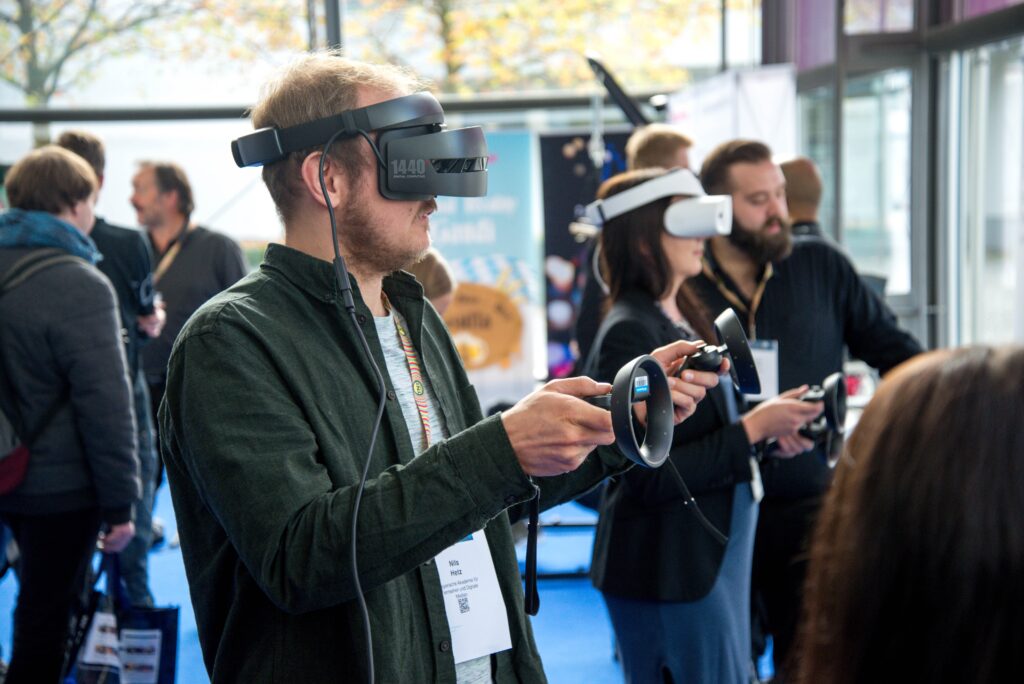
This can be attributed to the significant improvements in Internet connectivity, especially in emerging economies and Latin America. Many countries have rolled out 4G networks at affordable prices. And this has led to an increase in broadband penetration rates and high-speed internet access.
The growing popularity of tablets and smartphones has also increased the penetration rate of Augmented reality globally. AR devices are gradually becoming more accessible, which is expected to drive the expansion of the internation AR market during the projected period.
Augmented reality glasses are now available at an affordable price, eventually leading to a broader adoption among consumers and enterprises across various industries. These include entertainment, education, architecture, construction, engineering, manufacturing, and more.
What Is Augmented Reality (AR)?
In simple terms, it is a technology that allows virtual objects to exist in the same space as objects from the real world. This is accomplished by using computers or other electronic devices and their screens.
Augmented reality makes it possible for graphics to be overlaid on top of live video footage with the help of sensors and computer software. It’s a subset of a broader set of technologies called mixed reality. And this also includes immersive technologies like augmented reality (AR), mixed reality (MR), and blended reality (BR).
AR is not a new concept, but it has recently become much more popular. It’s the integration of computer graphics and the real world. And it’s here to stay. The numbers back that up.
In fact, research shows that by 2028, the market for AR will be worth $97.76 billion. It’s important to know what AR is, what industries it can benefit most, and how we can get started with this technology. You might want to start reading our blog post about augmented reality now.
What Are The Prospects Of The International AR Market?
For mobile AR, one of the significant factors that will drive growth is technology improvements, with enhancements mainly coming from processing power and storage capacity. Further, introducing new apps that support AR developments will boost adoption rates.
Another critical factor will be growing investments by leading technology giants such as Microsoft, Google, Facebook, and Apple into AR projects. This will lead to higher funding availability for startups developing AR apps.
Augmented reality (AR) blends the physical and virtual worlds. It has been around for a while, but it’s only recently that AR has made waves in the business world. We will explore how AR is being used in different industries and statistics of the industry to give you some insight into what this technology could be worth.
Augmented Reality’s Application in Business
Augmented reality has already impacted several engineering, manufacturing, and retail industries. The engineering industry uses augmented reality for product design and validation tasks. This creates opportunities for cost savings by replacing physical prototypes with simulated ones to reduce the need for expensive trial and error testing.
Manufacturing companies are using AR to simplify assembly lines where workers can receive step-by-step guidance on assembling parts. Retailers are using it to create interactive shopping experiences, enabling customers to experience products before they buy them using virtual or mixed reality features.
Augmented Reality In Engineering
Augmented reality is a technology that helps in improving the accuracy of engineering drawings and 3D models. It also provides an interactive experience, enabling engineers to get a clearer view of their projects and make better decisions. Augmented reality has made it easier for engineers to visualize their projects before building them.

This technology creates many opportunities for new products and innovations. Engineers can get a clear view of what they are designing without building the product first, thus saving time and money in the process. AR technology also helps engineers improve communication with artisans, such as carpenters or electricians. This is done by walking them through the design and enabling them to see what the finished product will look like.
Augmented Reality In Manufacturing
AR is poised to disrupt the manufacturing industry. The market for AR software in manufacturing is expected to grow from $2.6 million in 2017 to $8.1 million by 2025, at a Compound Annual Growth Rate (CAGR) of 47.4%.
AR can benefit manufacturers because it allows them to interact with 3-D models. And it uses simulations that enable engineers and designers to see their products before they are created or manufactured. AR also allows a manufacturer to provide step-by-step instructions on how customers can assemble their products. This makes it easier for customers, reducing the need for customer service support.
The increasing adoption of augmented reality devices such as smartphones and tablets will fuel the demand for AR software in the manufacturing sector over the forecast period. In addition, the development and implementation of new business models through AR will create opportunities in the market.
For example, manufacturers could use AR applications as a marketing tool that would help generate more leads, thereby increasing revenue generation opportunities.
Augmented Reality In Retail
Augmented reality technology has seen rapid growth and expansion in recent years. Ecommerce stores are leveraging AR to provide an immersive customer experience. For example, Ikea Place allows consumers to experience having a certain item of furniture in their homes without actually having it delivered.
Impact Of COVID-19 On The Augmented Reality (AR) Market
The Covid-19 pandemic has led to the widespread adoption of virtual reality and augmented reality technologies as businesses have turned to remote work.
Spending on AR & VR headsets, software, and services, including by consumers, rose in 2020, 50% from the year before.
The use of AR for shopping is up 32%. The augmented or virtual reality market is expected to be worth $2 billion within eight years, with 68% growth forecasted during that period.
Conclusion
The future of augmented reality is bright. A great deal can be done with AR, including transforming the way people do business, education, and entertainment. For example, imagine a world where you’re shopping for furniture online and want to see how it looks in your home before making a purchase. With augmented reality, this is possible.
It’s essential to consider the potential for AR as more brands adopt this technology for their marketing campaigns. Making an investment in augmented reality can help push your business into the future and better connect you with your customers.
AR is a lot of things. It can transform the way people do business, education, and entertainment. The possibilities are endless even when combined with wireless technology.
And it may propel the integration of home automation and appliances with mobile devices to provide greater connectivity and engagement for users. Expect substantial growth in biotechnology and healthcare industries during the forecast period due to their use of augmented reality (AR).
